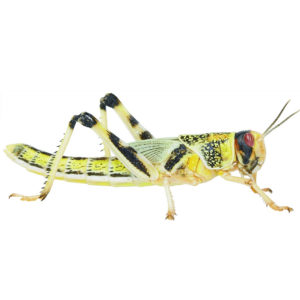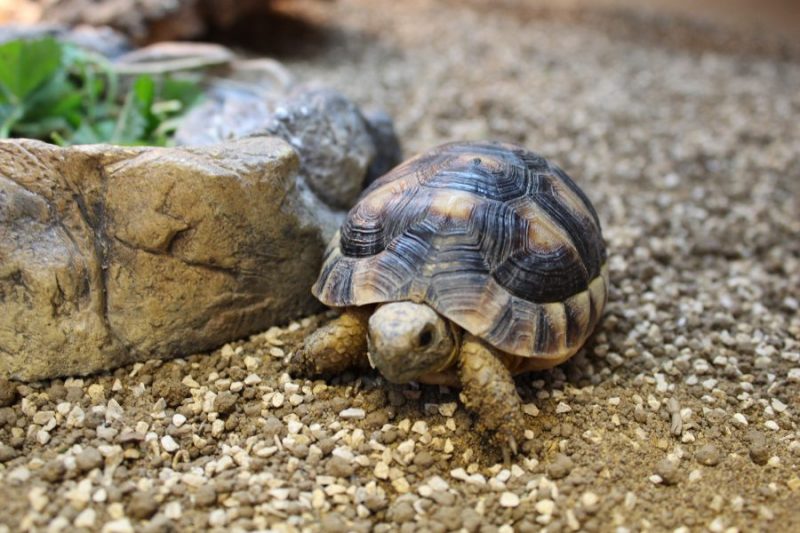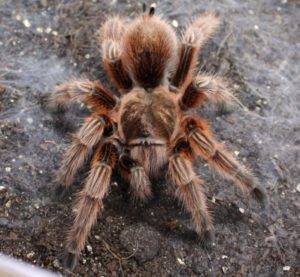
Live food Loyalty Program — Only at Our Kidlington Store!
Calling all reptile keepers and bug lovers! Stock up and earn rewards every time you purchase live foods in-store. 🦗 Get 50 Bonus Points When

Tortoise feeding is complicated. We use this guide as part of the training for our store staff and thought that it would be useful to share it.
Feeding Training – Tortoises
Wild Hermann’s tortoises can eat 146 different types of plant over a season. When considering a wild diet, bear in mind that Mediterranean tortoises come from an area of the world that has mild springs and autumns, and very arid summers. So the bulk of their diet will be flowers and new leaves in the spring, and dry, tough, often thorny growth through the summer. Be aware that Mediterranean species and Horsfield’s are browsers, African Leopard and Sulcatas are grazers, and the New World forest tortoises must have a high protein diet. Know where your tortoise comes from in the wild.
Most commercially available tortoise foods are made for profit and the convenience of the owner, not the health of the tortoise, and we do not recommend their use. Some pelleted foods are OK in small amounts as part of a weed based diet, but should form no more than 10% of the overall diet. Dried mixes of leaves and flowers can be useful when mixed with fresh greens, but many tortoises find them unpalatable on their own; they do improve the fibre content of a fresh food diet, however. Supermarket salads are low in fibre and (relatively) high in sugar and protein; most tortoise keepers will have to rely on them through the darkest days of winter, but their nutritional and fibrous content can be improved if mixed with dried weeds, and the occasional leaf of plantain which seems to hang on through the foulest weather. It is important to stress that tortoises will love supermarket salads, and when the weather improves and the weeds begin to grow again, it is vital that the owner perseveres in getting the tortoise back to eating a healthier diet. Supermarket salad is junk food for tortoises – ok in moderation, but lethal in large doses.
Use reliable websites such as the tortoise table to find out the advisability of using a particular plant for food. Pete’s Herbivore Salad Mix is made up of weeds grown from the commercially available seed mixes, so that customers can be sure that what they are feeding is tortoise safe. Do not be swayed by the ‘my tortoise loves it so it must be OK’ argument – tortoises are like people, and very fond of foods that are colossally bad for them. Avoid foods high in goitrogens (brassicas, some dark leafy greens) or oxalic acid (spinach), and fruit. Whilst the occasional half a strawberry will not do them any harm, too much fruit is very very bad for them.
Leaves should not be chopped too finely, although they should also not be so large that the tortoise struggles with them. Portion control is more important; each tortoise should be given approximately the amount of food needed to cover its shell, per day. This is an incredibly rough rule of thumb, and any tortoise should be weighed regularly to keep an eye on its weight. This will tell you if the tortoise is gaining weight at a steady pace, or if it is gorging itself and growing too quickly. Overly fast growth rates can be deadly in the long term.
Tortoises should be fed daily, especially when kept in groups so that every animal gets an equal chance at the food. When kept alone, portion control is even more important – what we want to avoid is the tortoise only eating the plants that they like, and ignoring the rest. They need to be hungry enough to eat everything put down for them, and although they are (of course!) allowed likes and dislikes, they must not be allowed to get picky. If a lot of food is left over at the end of the day, reduce the amount given the following day. If all the food is eaten very quickly, then consider adding another small feed in the afternoon.
The big problem with assessing body condition is, of course, that the body mostly cannot be seen. What is visible outside the shell can’t tell you a great deal about the nutritional status of the tortoise but it can be useful as a guideline. A thin tortoise will feel light when picked up; a healthy tortoise should feel heavier than expected when in the hand. Legs should be well proportioned and not lumpy or swollen, and there should be no skin bulging out of the leg holes. This could be due to either fat or fluid, and neither are a sign of good health.
All food should have a light covering of powder. Tortoises are one of the cleverest reptiles, and very quickly figure out how to manipulate their owners/keepers into giving them the food they want, or avoiding the ones they don’t. Make sure that there are no exceptions, and they will eat sensibly. It is very important not to over supplement. Although some is good, more is not necessarily better! The dangerous vitamins – the fat soluble A, D, E and K – can kill in excess. In order to fill in any gaps in normal nutrition, we recommend using a good multivitamin/multimineral supplement two to three times a week, and a plain calcium supplement the rest of the time. Tortoises have large, heavy bones and that thick shell to maintain – so offer extra calcium in the form of cuttlefish bone, or chalk blocks. The blocks are a better source of calcium, as they are phosphorus free.
Recommended reading – The Tortoise Table

Calling all reptile keepers and bug lovers! Stock up and earn rewards every time you purchase live foods in-store. 🦗 Get 50 Bonus Points When

Welcome to Evolution Reptiles’ guide to tarantula care! Whether you’re a seasoned arachnid enthusiast or just starting your journey into the fascinating world of these

Why Do UVB Lamps for Reptiles Need to Be Replaced and How Often UVB lamps are essential for the health and well-being of reptiles, but
Copyright 2021 Evolution Reptiles
All rights reserved.